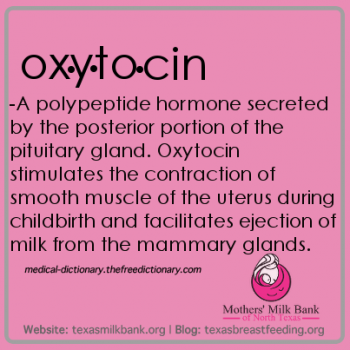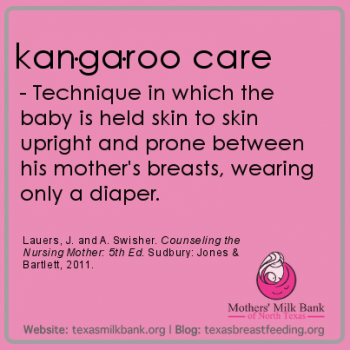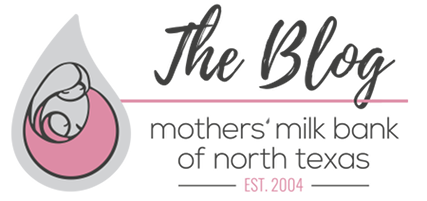Throwback Thursday: Breastmilk-ology
Thursday, 7/28/2016
We’re commemorating Throwback Thursday by bringing back blog content from the past! These terms are always great to know and understand, regardless of the passage of time. Time to increase your breastfeeding and mom IQ!
Oxytocin
Most know that oxytocin is the hormone responsible for contractions during childbirth and helping with milk ejection reflex (letdown), but it does more than that! Here are three things that you may not know about oxytocin:
It’s easy to get a quick boost. Research has shown that hugs, handshakes, or other physical contact releases low levels of oxytocin in the brain for all parties involved. The interaction is not just limited to humans: a dog’s gaze at its owner can increase the human’s oxytocin levels, while petting and speaking to a dog after a separation shows an increase in the dog’s oxytocin levels.
It can help provide stress relief. Oxytocin is thought to be released by the brain when a person smiles. Smiling genuinely while stressed can help you recover faster than giving a fake smile. However, even a fake smile can help a person recover faster than a neutral expression during a stressful task.
It has been linked to optimism and a higher self-esteem. Oxytocin levels increase in times of stress and has been associated with social skills such as empathy. Researchers have found that people with two variants of the oxytocin receptor gene can have substantially lower levels of optimism and self-esteem, and significantly higher levels of depressive symptoms than those with a third variant. While these results can be used to predict behavior, they do not determine it.
Feedback Inhibitor of Lactation
Feedback Inhibitor of Lactation (FIL) is the whey protein found in breasts that plays a role in the demand and supply process of breastfeeding. When a woman’s breasts are full or engorged, they contain more FIL than when they are empty. Repeated instances of engorgement or not emptying breasts can lead to a drop in breast milk supply over time.
To learn more about FIL and its effect on lactation, visit Kellymom, Nurshable, or Low Milk Supply.
Kangaroo Care
While kangaroo care (also known as skin-to-skin care) is practiced on preterm infants, it has been known to benefit full term infants as well. Visit the March of Dimes’ website for more information on kangaroo care in the NICU.
Benefits of kangaroo care for both preterm and full term infants include: increased attachment and bonding, parental confidence, regulated body temperature, regulated breathing patterns, help with breastfeeding success, and help in reduction of infant morbidity rates.
Dads can practice kangaroo care, too! Since babies are often familiar with their father’s voice while in utero, skin-to-skin with Dad can often calm Baby down. Additionally, it helps promote father-infant bonding. For more benefits of fathers practicing kangaroo care, click here.
For more information about Mothers’ Milk Bank of North Texas, click here.



